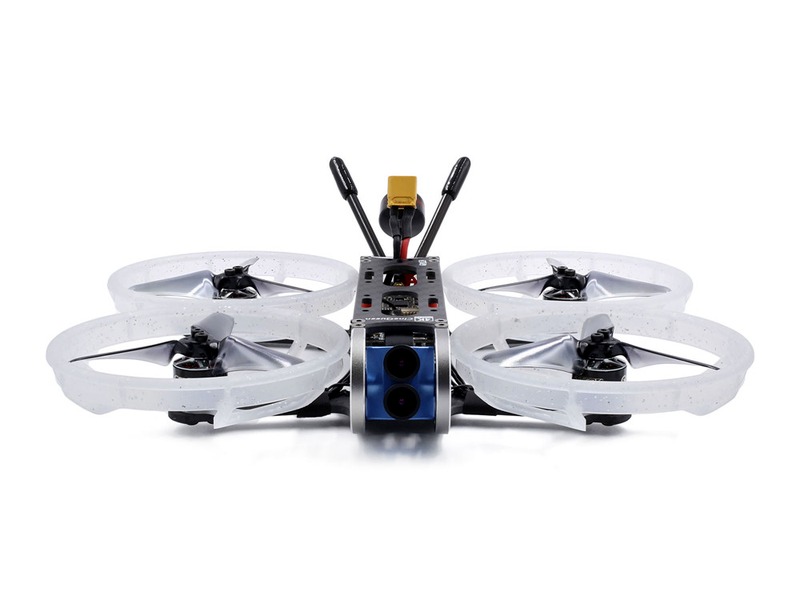What are 4 components of a drone?

A drone is a type of unmanned aerial vehicle (UAV) that is used for a variety of purposes, including surveillance, photography, and delivery. The four main components of a drone are the airframe, propulsion system, control system, and payload.
The airframe is the main body of the drone and is responsible for providing structural support and housing the other components. It is typically made of lightweight materials such as carbon fiber or aluminum and is designed to be aerodynamic. The airframe also includes the landing gear, which is used to land the drone safely.
The propulsion system is the component that provides the power to the drone. It typically consists of one or more motors, propellers, and a power source such as a battery or fuel. The motors and propellers provide thrust to the drone, allowing it to move forward, backward, and side-to-side. The power source provides the energy needed to operate the motors and propellers.
The control system is the component that is responsible for controlling the drone. It typically consists of a radio transmitter, receiver, and flight controller. The radio transmitter is used to send commands to the drone, such as changing direction or altitude. The receiver receives the commands and sends them to the flight controller, which interprets the commands and sends them to the motors and propellers.
The payload is the component that is responsible for carrying the drone’s cargo. It can be anything from a camera to a package. The payload is typically attached to the underside of the drone and is secured with straps or clips.
These four components are the main components of a drone, and they work together to provide the drone with the ability to fly and perform its intended tasks. Each component is important in its own right, and without one or more of them, the drone would not be able to function properly.
Comments / Question
2. Propellers: The propellers are responsible for providing the lift to the drone. The larger the propellers, the more lift they can generate, allowing the drone to fly further and faster.
3. Battery: The battery provides the power to the motors and propellers. The larger the battery, the longer the drone can stay in the air.
4. Flight Controller: The flight controller is responsible for controlling the motors, propellers, and other components of the drone. A good flight controller will be able to provide smooth and precise control of the drone.
2. Greater Maneuverability: Having four components in a drone allows for greater maneuverability and agility. This is beneficial when performing aerial acrobatics or when navigating tight spaces.
3. Increased Speed: Having four components in a drone increases the speed and responsiveness of the drone. This is beneficial when racing or when needing to quickly change direction.
4. Increased Lift Capacity: Having four components in a drone increases the lift capacity of the drone. This is beneficial when carrying heavier payloads such as cameras or other equipment.
The components of a drone work together in order to provide the aircraft with power, propulsion, control, and navigation. The main components of a drone include the power system (i.e. battery, motor, and ESCs), the flight controller, the frame, the propellers, and the communication system (i.e. radio transmitter and receiver).
The power system is responsible for providing the necessary electricity to power the motors and control the speed of the propellers. The ESCs (electronic speed controllers) convert the DC power from the battery into AC power to control the motors. The flight controller is the computer that monitors and controls the drone’s flight path, speed, altitude, and movements. It can be programmed with a set of instructions to autonomously fly the drone. The frame provides the structural strength and stability to the drone, and contains all of the components. The propellers propel the drone, providing thrust and control. The communication system is responsible for connecting the drone to the radio transmitter and receiver, and transmitting the telemetry data such as battery levels, altitude, and position to the ground station.
All of these components work together in order for the drone to fly autonomously, as desired by the user.
2. Propellers: Propellers are used to generate lift and move the drone forward. Different types of propellers are available for different types of drones and have different levels of performance.
3. Flight Controller: The flight controller is the brain of the drone and is responsible for controlling the motors and propellers. It is also responsible for processing data from various sensors and providing input to the autopilot.
4. Battery: The battery is the power source of the drone and can be charged and replaced. It is important to choose the right battery for your drone to ensure it has enough energy to fly for the desired amount of time.
5. Autopilot: The autopilot is the system that allows the drone to fly autonomously without the need for a human pilot. It processes the data from the sensors and flight controller to maintain the desired flight path.
6. Receiver: The receiver is responsible for receiving signals from the remote controller and translating them into commands for the drone.
7. Remote Controller: The remote controller is the device used by the drone pilot to control the drone. It sends signals to the drone through the receiver, which are then translated into commands for the drone to follow.
2. Motor: Motors power the propellers and keep the drone airborne.
3. Battery: Battery provides the energy to power the motors and other components of the drone.
4. Flight Controller: A flight controller is a computer that processes data from the drone’s sensors to keep the drone stable and allow it to fly.

